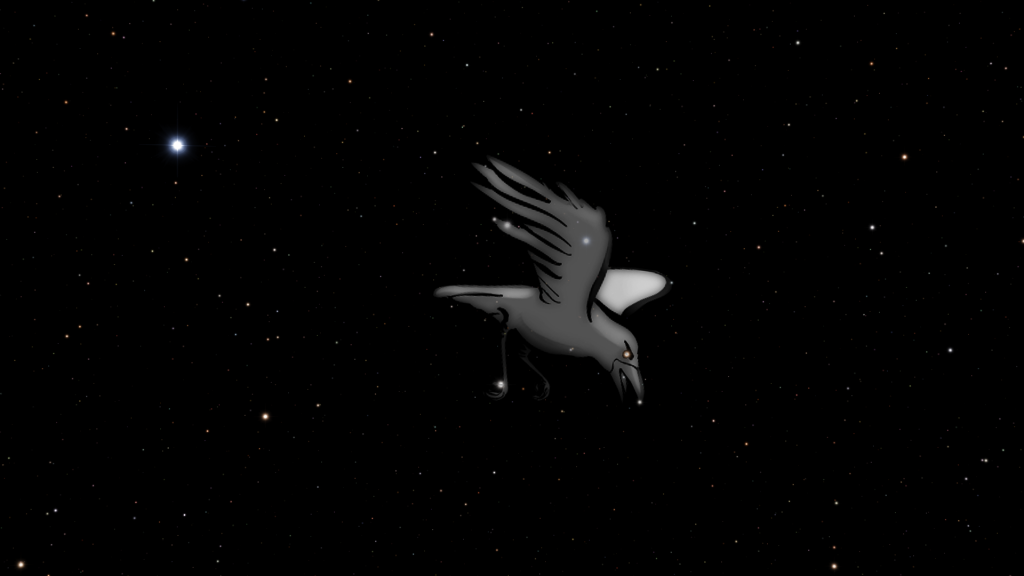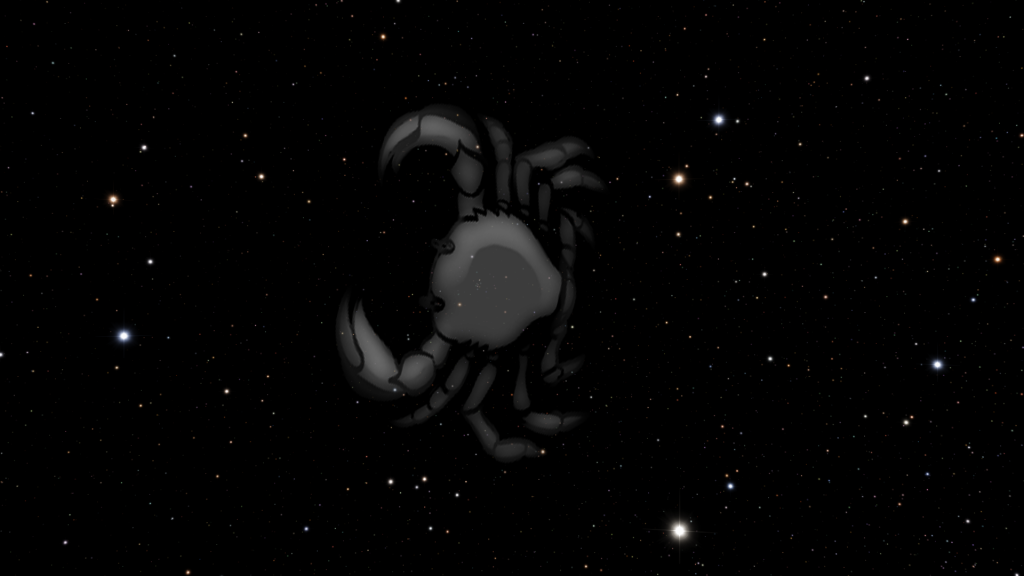The constellation of Cygnus (swan) can be observed in the northern hemisphere along the Milky Way. Despite the fact that in the middle latitudes it is visible all year round, it is better to observe it from the beginning of summer to the middle of autumn. Moreover, in order to see Cygnus, it is not necessary to wait for the onset of deep night. Its brightest stars begin to appear already in the twilight sky.
How can you see the constellation of Cygnus in the sky? In large cities, because of the glare and dust, it is not so well visible, so animations and an image are prepared for you, how it looks outside the city, in the mountains and if you look at it in space, from orbit.
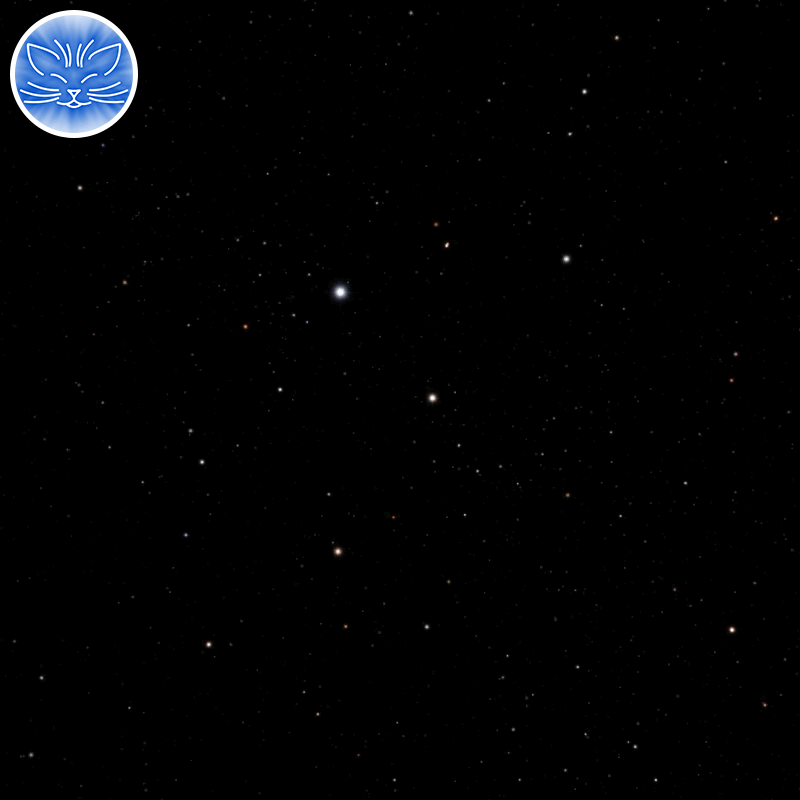

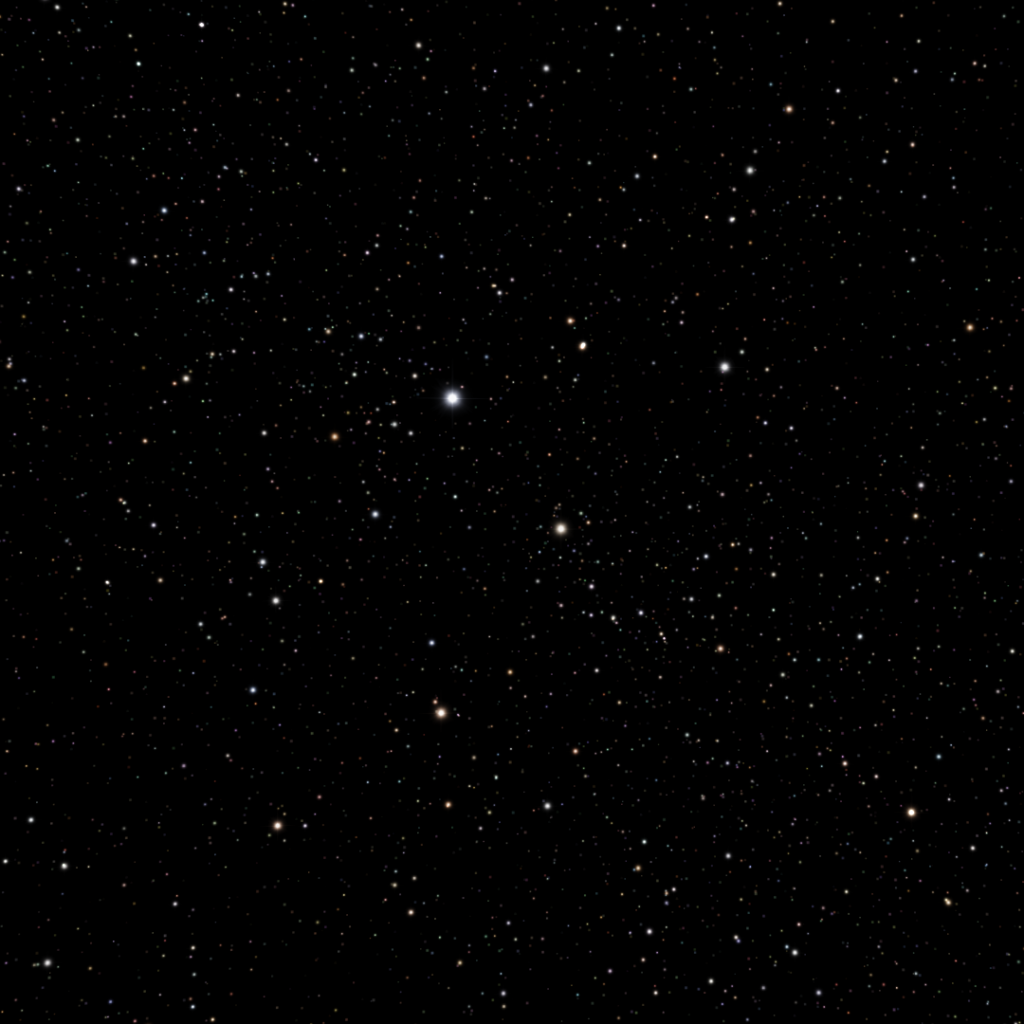
A characteristic feature is the cross (also called the Northern Cross) with the top – the star Deneb. Deneb is the first-magnitude star and the brightest in the constellation, a white supergiant whose diameter is 35 times larger than the Sun, and the luminosity is 67,000 times greater. It is also the tip of the Swan’s tail and one of the vertices of the Great Summer Triangle: Vega (α Lyrae) – Deneb (α Cygni) – Altair (α Aquilae). Watch an interesting video about what will happen to the Big Summer Triangle in 110 thousand years.
Albireo is the beak of a bird, a double star, in the telescope has a golden yellow color, and its satellite is blue. Delta (δ) Cygni, also known as Fawaris, is the right wing, a triple star consisting of two adjacent and one distant from them. Epsilon (ε) Cygni, aka Aljanah, is the left wing. Currently, this giant star has begun to die and burn helium in the core. Sadr is a second–magnitude star in the constellation, a supergiant, it is also the “breast” of the Swan.
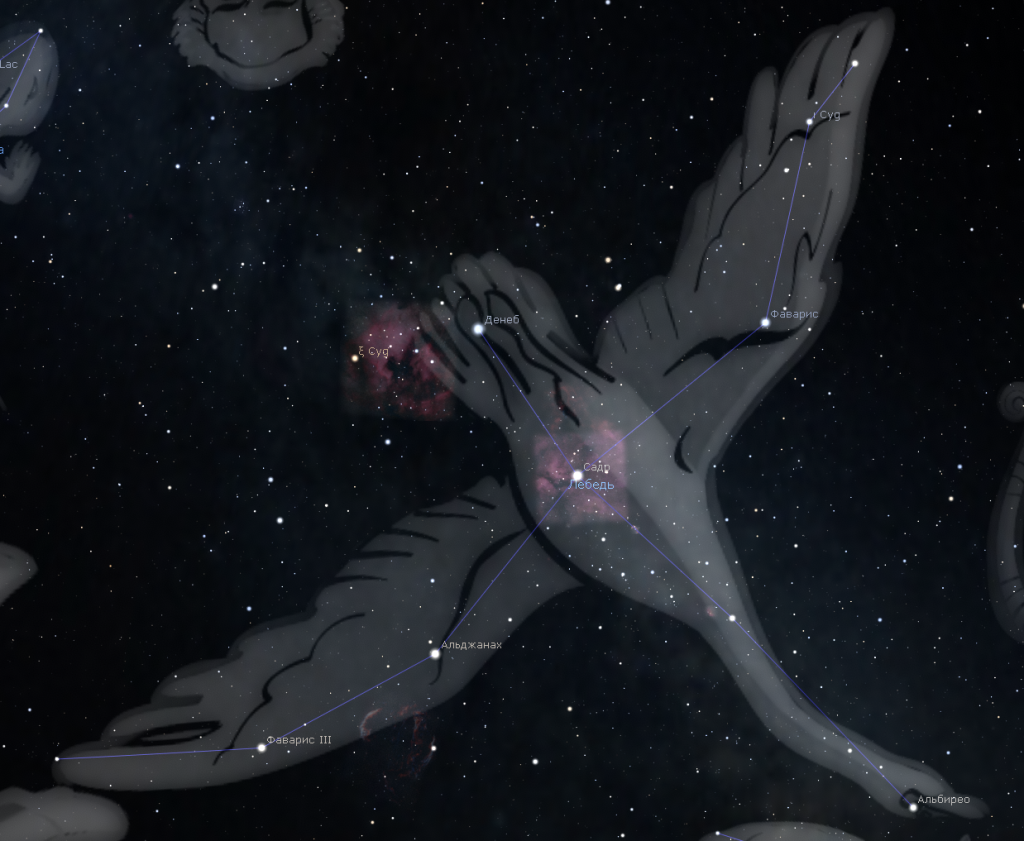
Other interesting objects of the Cygnus constellation
In addition to many stars, other interesting objects can be observed in this constellation – nebulae, star clusters, radio galaxies and a meteor shower. For example, to the left of Deneb, in the “tail of the bird” is the North America Nebula (NGC 7000), in the same place, but separated from it by a layer of dust is the Pelican Nebula (IC 5070 and IC 5067), and in the “left wing”, slightly below and to the left of Aljanah, the Veil Nebula is spread out, which is so large that itself, in turn, consists of 5 different nebulae.
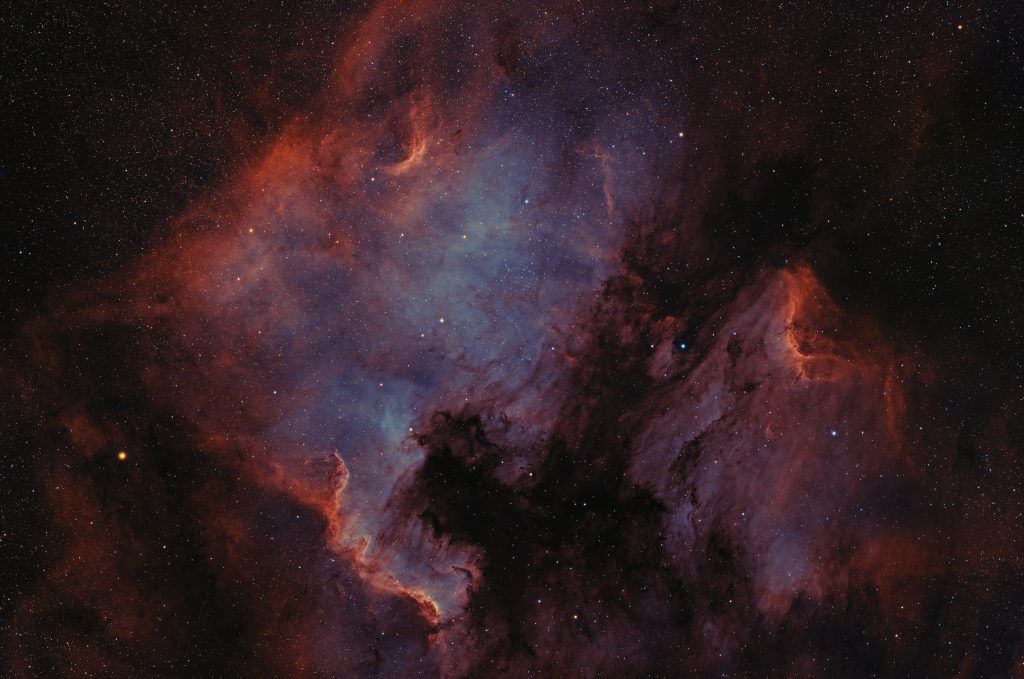
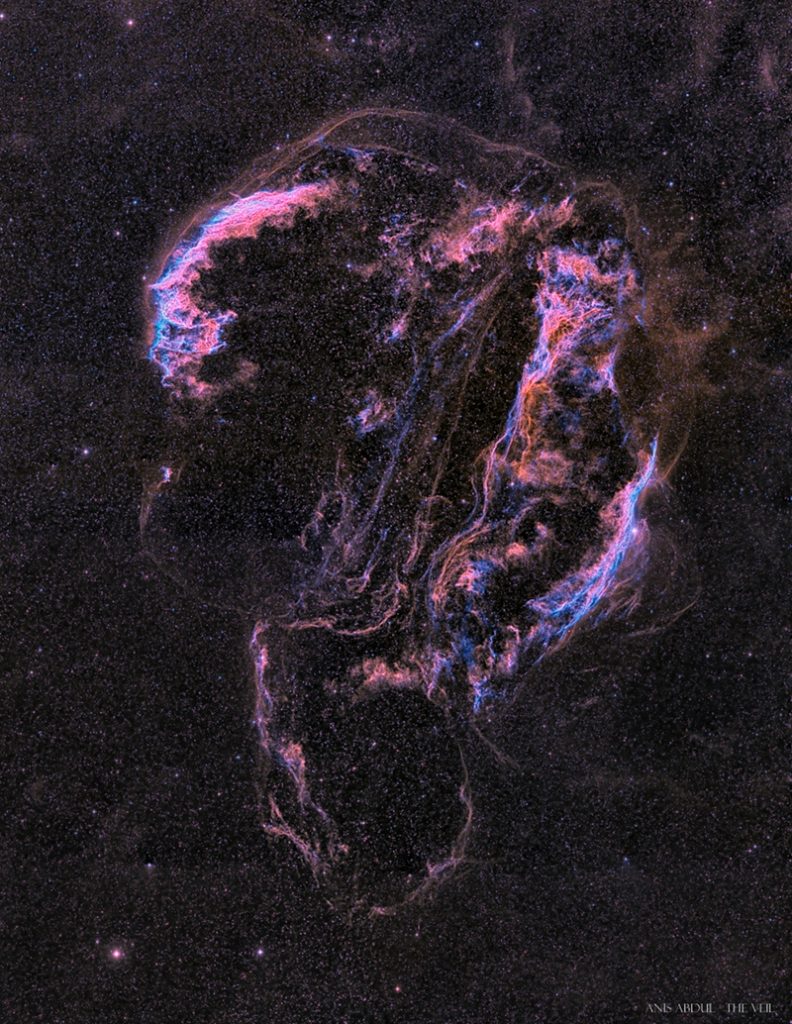
Mythology of the Cygnus constellation
Cygnus constellation derives its name from the Latinized Greek word for swan, its three-letter abbreviation is Cyg. It is recognizable, quite large, covers almost 2% of the night sky, the 16th largest of all 88 constellations, and it is one of the oldest. At the time of Ptolemy, it was included in the catalog of the starry sky (there were 48 constellations in total) under the name “Bird”. The ancient Arabs associated it with a chicken, the Babylonians – with a forest bird.
According to Greek legend, Zeus in the guise of a bird flies on a date to his beloved Leda. God was fascinated by the beauty of the girl, and in order not to frighten her and hide from the jealousy of his wife Hera, he turned into a swan. Leda let the bird come to her and children appeared from that union. In different sources, their number varies from two to four. Two of them are Castor and Pollux (Polydeucus) they are also depicted in the starry sky in the constellation Gemini. However, there is another, albeit less common legend about this constellation. According to it, Phaethon, the son of Helios, asked his father to ride his chariot for one day. But he could not cope with the control of the winged horses. Zeus, saving the Earth from fires, was forced to strike the chariot with lightning. Since Phaethon was mortal, he died from this blow. His body fell into the waters of Eridan. A close friend of Phaeton, Kikn, was looking for his remains on the banks of the river and grieved very much. The gods were touched by his suffering and turned Kikn into a snow-white swan living by the water. It was also placed among the stars as a symbol of a devoted friend coming to the rescue.
Have you seen this constellation with the naked eye or with a telescope? What is your favorite constellation? Are you interested in the category about constellations? Share your impressions in the comments.


